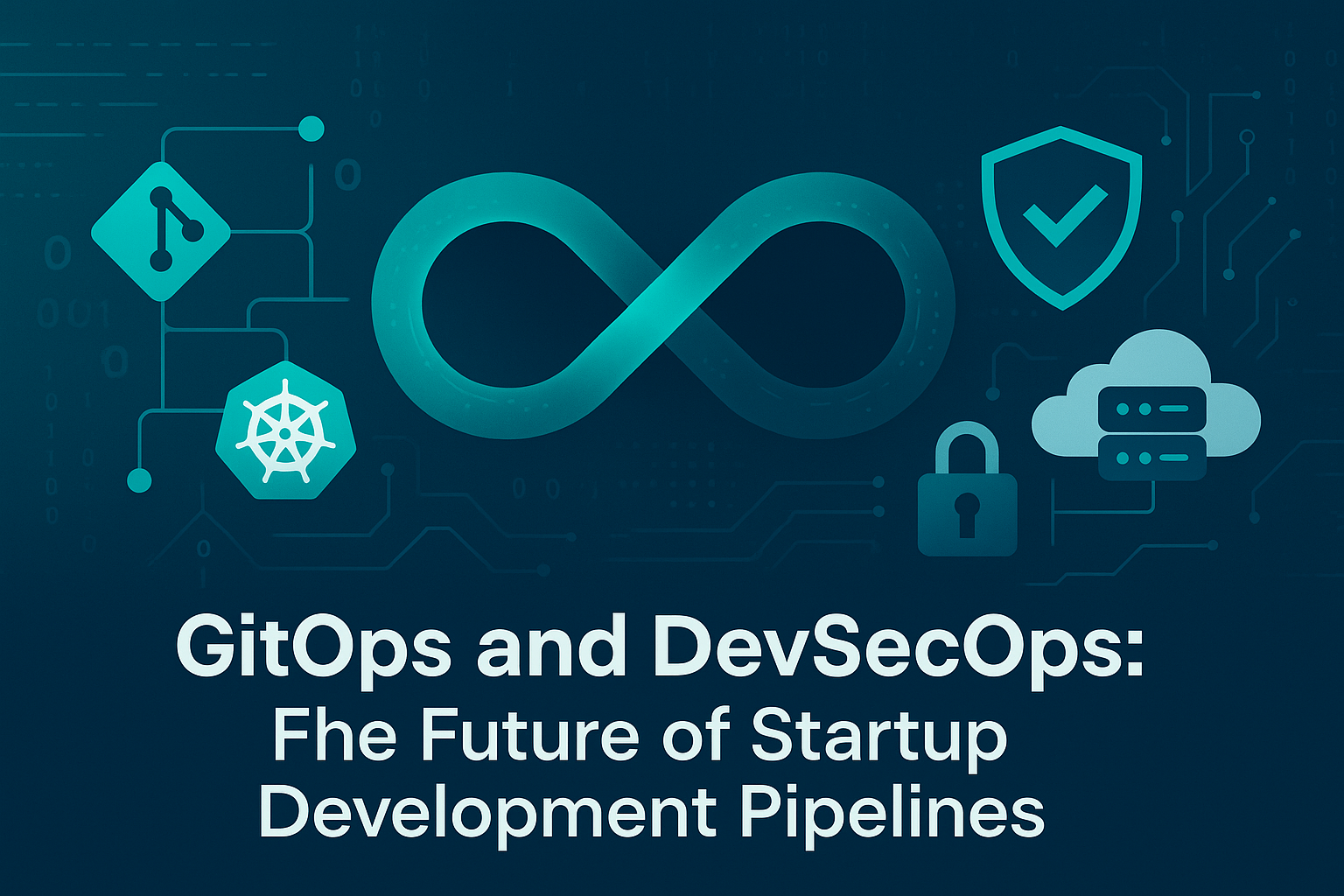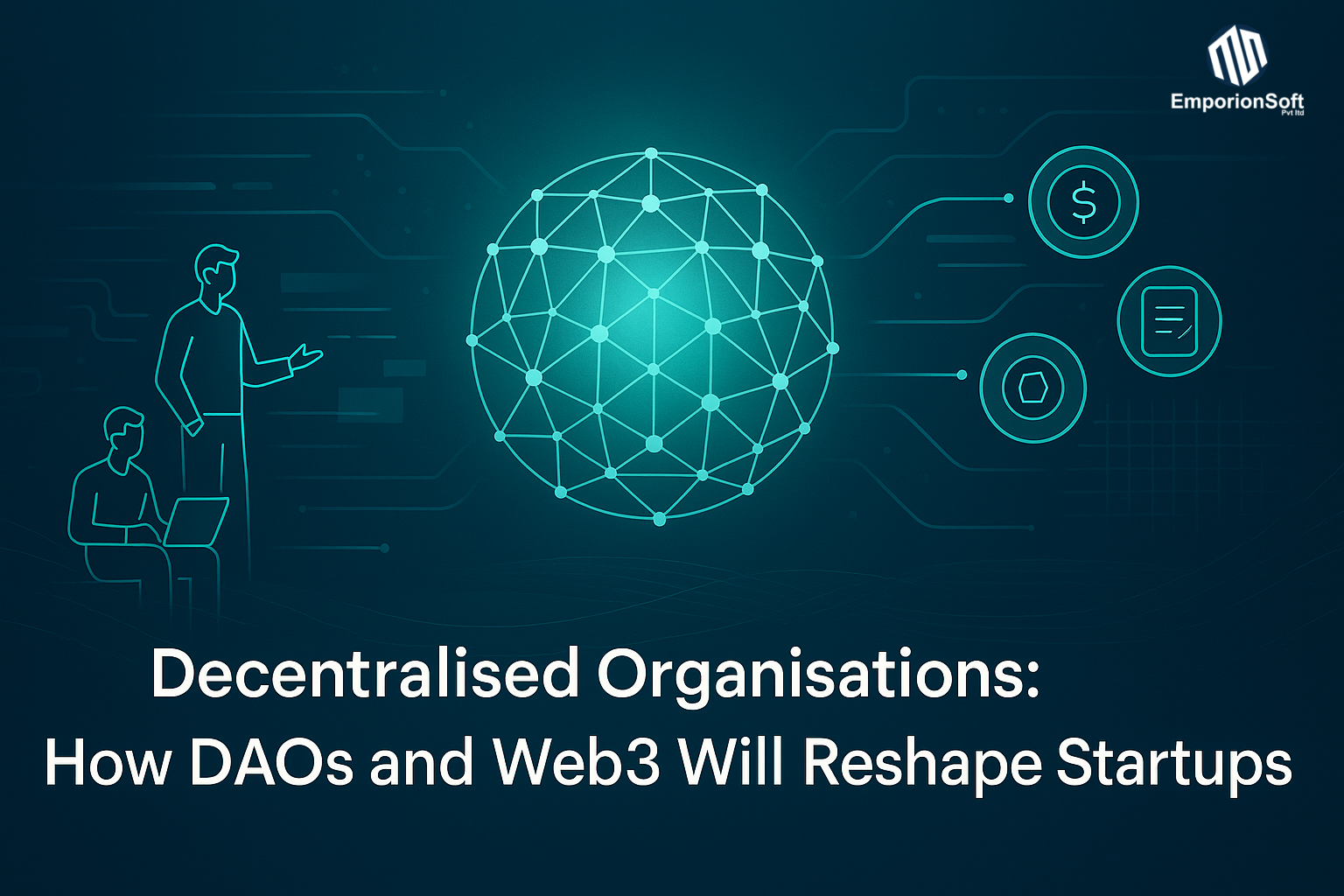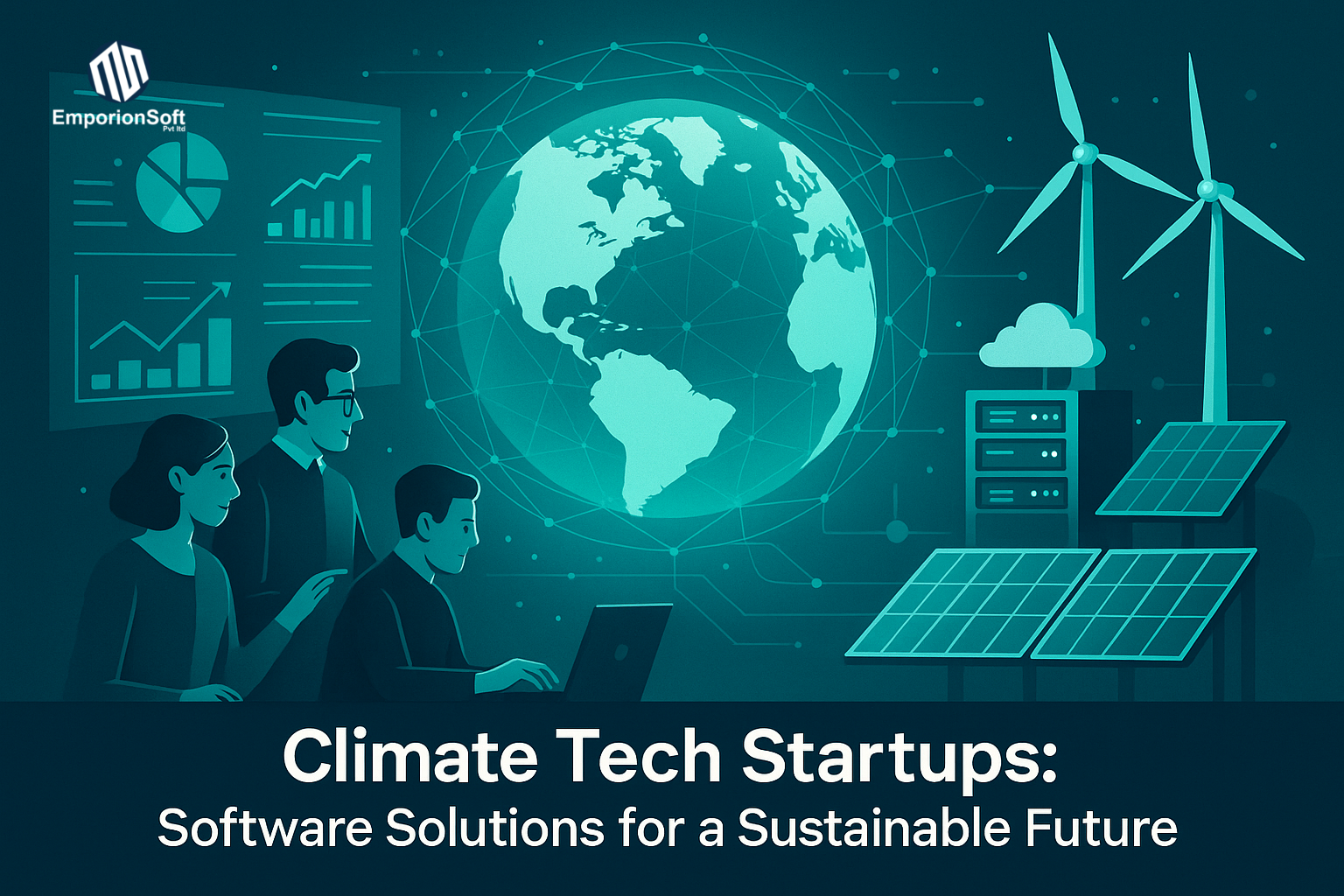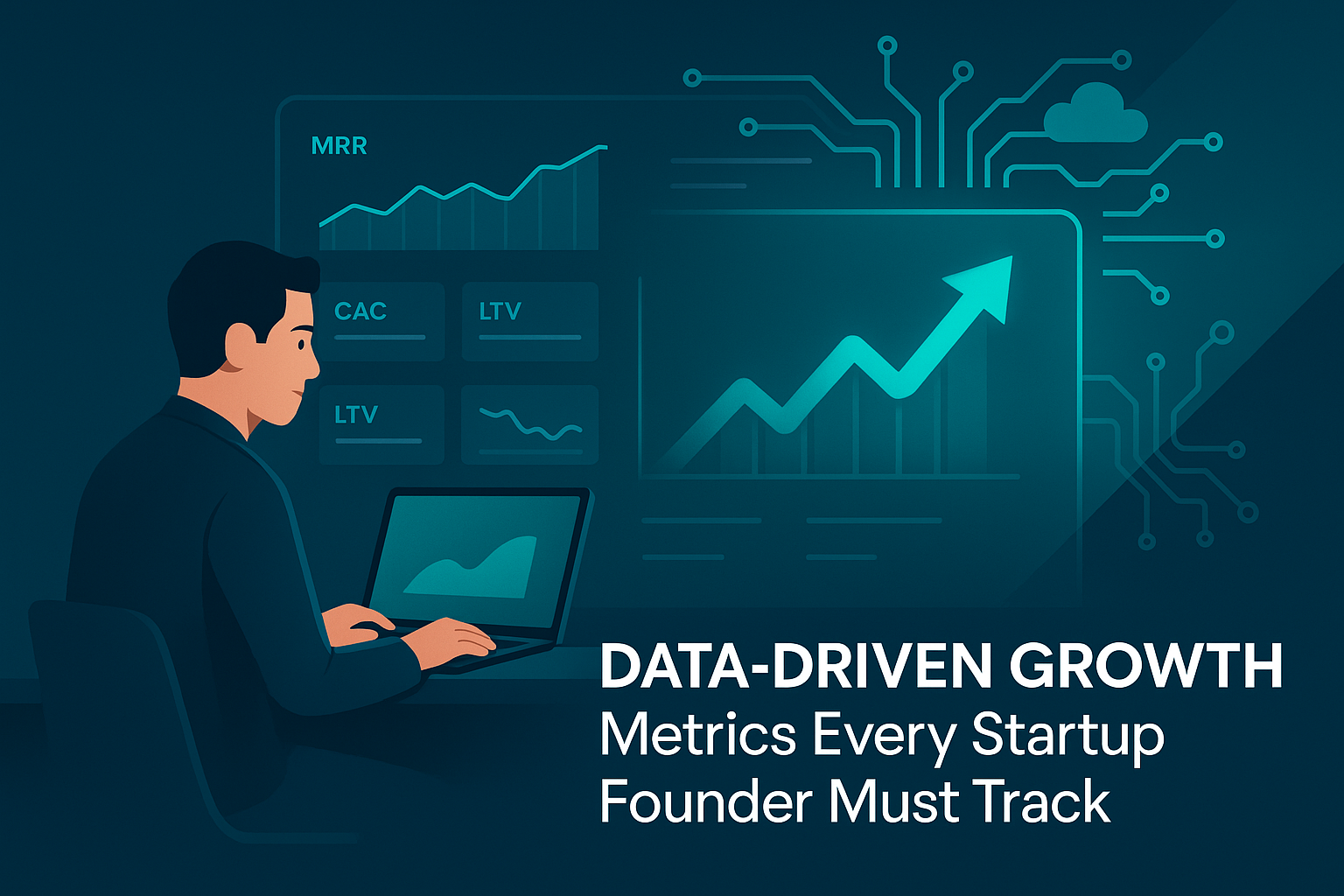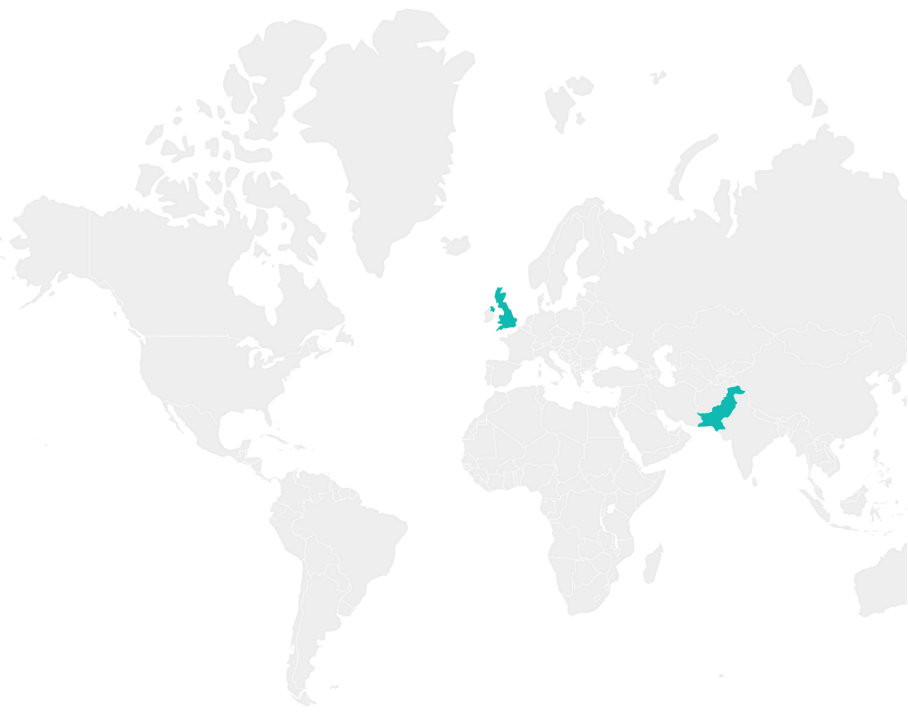GitOps and DevSecOps: The Future of Startup Development Pipelines
The Shift from Traditional DevOps to GitOps and DevSecOps
In today’s hyper-competitive software landscape, startups live or die by their ability to deliver innovation faster than ever before. Release cycles that once spanned weeks are now compressed into days—or even hours. Yet, with this speed comes a heightened demand for reliability, compliance, and robust security. This is where GitOps and DevSecOps are transforming the rules of the game for modern software development pipelines.
Over the past decade, DevOps has revolutionised how teams collaborate, bridging the gap between development and operations. However, as software ecosystems expand, traditional DevOps approaches are struggling to keep up with the escalating complexity of cloud-native environments. The question is no longer just about efficiency, but about trust, traceability, and security at every commit. This is precisely where GitOps and DevSecOps enter the conversation — blending automation with governance to redefine the software delivery lifecycle for startups.
To understand the transition, it’s essential to revisit the distinction between DevOps vs DevSecOps and GitOps vs DevOps. DevOps focuses primarily on integrating development and operations for faster deployments. DevSecOps extends this model by embedding security practices throughout the pipeline, making “security as code” a default rather than an afterthought. GitOps, on the other hand, builds upon the DevOps foundation by using Git as the single source of truth for both infrastructure and application configurations. This paradigm ensures that any change — from a code update to a Kubernetes configuration — is versioned, auditable, and automatically deployed through declarative automation.
When combined, GitOps and DevSecOps establish a pipeline where every change is secure, compliant, and reproducible, allowing startups to scale with confidence. According to the Cloud Native Computing Foundation (CNCF), GitOps enables consistency across environments by leveraging the same version-controlled approach that developers already use for software, now applied to infrastructure and policy. Meanwhile, Red Hat’s DevSecOps documentation reinforces that this security-driven evolution ensures code integrity without sacrificing deployment velocity — a critical balance for emerging tech ventures.
At EmporionSoft, we’ve observed this shift first-hand across projects involving AI, blockchain, and data-driven platforms. Startups are rapidly realising that conventional CI/CD models lack the built-in resilience and transparency required for scaling securely in cloud-native environments. Integrating GitOps and DevSecOps practices into their pipelines offers not only better automation and rollback capabilities but also ensures that every action—every deployment—is governed by code, reducing human error and improving compliance across the board.
Why Startups Need Security and Speed in Equal Measure
For startups, time-to-market is often the decisive factor between success and failure. However, the relentless pressure to release faster can lead to vulnerabilities slipping through the cracks. Traditional DevOps pipelines, while effective in continuous delivery, often treat security as a final checkpoint rather than a continuous process. This reactive stance leaves critical gaps in an era when cyber threats are more advanced and regulations are more stringent.
By adopting DevSecOps, startups embed automated testing, vulnerability scanning, and policy enforcement throughout the development process — shifting security “left” to catch issues before they reach production. Similarly, GitOps ensures that infrastructure changes are traceable, peer-reviewed, and automatically validated, making it far easier to identify and roll back problematic updates. Together, these methodologies create an ecosystem of speed, security, and stability — the three pillars of modern software success.
The shift towards automation and compliance is not just a technical upgrade but a strategic imperative. Startups embracing GitOps and DevSecOps report higher deployment frequencies, lower change failure rates, and faster recovery times — outcomes supported by research from Google’s DORA State of DevOps reports. This blend of agility and governance empowers startups to innovate without compromising trust or operational efficiency.
For organisations looking to evolve their software pipelines, EmporionSoft’s team of experts provides tailored solutions that integrate AI-driven automation and secure-by-design principles. To learn how artificial intelligence can further enhance your pipeline security and performance, explore our detailed insights in How AI is Revolutionizing Software Development.
Defining GitOps and DevSecOps for Modern Startups
In the fast-moving world of software innovation, startups cannot afford to rely on outdated delivery models. They need pipelines that are not only automated but also auditable, secure, and self-healing. This is where GitOps and DevSecOps have emerged as the new gold standards in modern software engineering. Both build upon the foundations of DevOps but extend its philosophy to cover governance, compliance, and end-to-end security.
To begin with, the DevSecOps definition can be described as an evolution of DevOps that embeds security practices throughout the continuous integration and continuous deployment (CI/CD) process. Instead of treating security as a separate post-development task, DevSecOps ensures that every phase — from planning and coding to building, testing, and deployment — incorporates proactive security checks. This “shift-left” approach means potential vulnerabilities are identified early, drastically reducing risk and remediation costs.
GitOps, on the other hand, introduces a paradigm in which Git serves as the single source of truth for both code and infrastructure. All system configurations and application states are stored and managed in Git repositories, ensuring that deployments are reproducible, trackable, and easily reversible. For startups working with GitOps Kubernetes environments, this means that every change in the repository is automatically synchronised with the live system, creating a self-operating deployment mechanism.
A practical example illustrates this alignment. Imagine a startup deploying a microservices-based application on Kubernetes. Instead of manually pushing changes, the development team commits configuration updates to a Git repository. Tools like Flux GitOps or ArgoCD then detect the change, validate it, and automatically apply it to the cluster — ensuring consistency and eliminating human error. This declarative model not only simplifies complex operations but also enhances transparency and auditability, making it ideal for small teams scaling rapidly in a cloud-native world.
Both methodologies are guided by clear philosophical frameworks. The DevSecOps manifesto, published by industry practitioners, advocates principles like “security as code,” “compliance as code,” and “automation everywhere.” Similarly, the Cloud Native Computing Foundation (CNCF) defines GitOps standards as a set of best practices that rely on declarative systems and version control to manage infrastructure and application deployment (CNCF GitOps Standards). Together, these movements represent a shift from manual processes to fully automated, code-driven governance — a transformation that enables startups to scale without sacrificing control or security.
At EmporionSoft, we often see early-stage ventures adopting these practices to streamline disaster recovery and improve resilience. By defining infrastructure and security policies as code, teams can replicate entire environments instantly, ensure compliance under regulatory frameworks, and recover from incidents with minimal downtime. These advantages are not theoretical; they are measurable gains that directly impact uptime, agility, and trust.
Key Principles: Infrastructure as Code, Security as Code, and Automation
The unifying thread between GitOps and DevSecOps lies in their shared commitment to automation and codification. Three foundational principles drive their effectiveness:
1. Infrastructure as Code (IaC):
GitOps operationalises IaC by storing infrastructure configurations in version control. For startups deploying applications through GitOps Kubernetes, this ensures that any infrastructure drift can be detected and corrected automatically. The entire operational state of the system is visible, auditable, and recoverable.
2. Security as Code:
In DevSecOps, security policies, vulnerability scans, and compliance rules are codified and integrated directly into CI/CD pipelines. By embedding tools such as static analysis, dependency scanning, and container vulnerability checks, startups can maintain continuous assurance rather than periodic audits. AWS’s DevSecOps Pipeline Reference Architecture outlines how security automation can become a seamless part of every build and release.
3. Continuous Automation and Feedback:
Automation forms the backbone of both methodologies. GitOps automates deployments, while DevSecOps automates security verification. The result is a closed feedback loop — developers receive instant alerts when code introduces risks or fails compliance checks. This constant feedback reinforces accountability and accelerates innovation cycles.
Ultimately, both GitOps and DevSecOps share the goal of making software delivery faster, safer, and more reliable. They replace manual approvals and ad-hoc deployments with policy-driven, reproducible systems that can scale with a startup’s ambitions.
The Synergy Between GitOps and DevSecOps
As startups move deeper into cloud-native development, achieving both velocity and security has become a delicate balancing act. This is where the synergy between GitOps and DevSecOps emerges as a transformative force — creating a streamlined, auditable, and secure software delivery pipeline. By combining GitOps’ declarative infrastructure management with DevSecOps’ continuous security automation, startups can achieve unprecedented levels of consistency, traceability, and resilience within their CI/CD systems.
Both methodologies share a core philosophy: automation through code. While GitOps focuses on using Git as the single source of truth for all operational configurations, DevSecOps ensures that every step in the development process — from build to deployment — includes automated security validation. When united, they give rise to a self-regulating DevSecOps pipeline, one that not only deploys software continuously but also verifies compliance and security policies in real time.
For example, in a GitOps Kubernetes environment, configuration files for clusters and workloads are stored in Git repositories. When a developer commits a change, automation tools like ArgoCD or Jenkins X GitOps detect the modification and synchronise it with the target environment. This ensures that deployments are declarative and reversible — a concept that drastically reduces risk. If an issue arises, teams can simply revert the Git commit to roll back to a previous, stable state instantly.
Meanwhile, DevSecOps ensures that this process is never blind to security concerns. Static Application Security Testing (SAST) and Dynamic Application Security Testing (DAST) tools are integrated directly into the pipeline to scan for vulnerabilities, configuration drift, or mismanaged secrets before the code reaches production. The combination of DevSecOps tools — such as SonarQube, OWASP ZAP, or Snyk — with GitOps automation results in an adaptive, self-healing system that prevents misconfigurations and ensures compliance with security policies automatically.
Startups adopting this fusion gain a significant edge. GitOps enables rapid iteration and consistent environment management, while DevSecOps introduces guardrails that maintain security integrity. Together, they eliminate manual approvals and ad-hoc checks, replacing them with continuous validation pipelines that operate at the speed of innovation.
At EmporionSoft, we have witnessed this harmony firsthand in projects where real-time AI-driven deployments depend on constant iteration and reliability. For instance, when deploying AI models that require frequent updates, GitOps and DevSecOps ensure that model versions are traceable, securely tested, and deployed seamlessly — without the risk of unverified changes or compliance violations. This approach is not limited to AI; it extends to any startup operating on distributed cloud infrastructures, where downtime or data exposure can be fatal to business credibility.
Google Cloud’s GitOps best practices guide reinforces this by highlighting the value of combining declarative infrastructure management with automated policy enforcement. According to their framework, the integration of GitOps with DevSecOps principles ensures that “every deployment is verified, logged, and reversible,” establishing a foundation of operational confidence that’s vital for scaling technology-driven startups.
Automated Compliance, Faster Deployments, and Fewer Vulnerabilities
The most profound benefit of merging GitOps and DevSecOps lies in automation with accountability. By aligning automation with version control, every configuration, security rule, and deployment event is versioned and auditable. This auditability ensures not only operational transparency but also regulatory compliance — a growing necessity for startups managing sensitive user data.
The use of Jenkins X GitOps allows development teams to define entire CI/CD workflows as code. Each build is verified, tested, and deployed using automated scripts, drastically reducing manual intervention. Meanwhile, integrated DevSecOps tools continuously monitor for vulnerabilities or misconfigurations, offering instant remediation suggestions. The result is a software pipeline that evolves continuously without sacrificing control or security posture.
Compliance, often a bottleneck in traditional CI/CD systems, becomes a seamless part of the workflow under this integrated approach. Policies are coded and stored alongside infrastructure definitions, meaning compliance checks are executed automatically during deployments. Rollbacks — once a manual and time-consuming process — are handled instantly through Git-based reversions.
For startups running distributed systems across multiple clouds, such as AWS, Azure, or GCP, this model aligns perfectly with the need for multi-cloud consistency. Teams can use GitOps to manage their deployments declaratively while DevSecOps ensures uniform policy enforcement across every environment — a concept detailed further in EmporionSoft’s Cloud Providers Comparison 2025.
Implementing GitOps and DevSecOps in Startup Pipelines
For startups striving to innovate at speed without compromising on security, integrating GitOps and DevSecOps into their software delivery pipelines has become a critical success factor. These modern methodologies enable lean teams to automate deployments, enforce compliance, and reduce operational risks — all through version-controlled, auditable systems. However, adopting them requires a structured and well-planned approach. By understanding the DevSecOps process flow and the core principles behind GitOps-driven automation, startups can gradually build a secure, scalable, and fully automated CI/CD ecosystem.
The implementation journey begins with defining who owns what. Startups must ensure that developers, operations, and security teams share a common understanding of how code moves from development to production. This cultural shift — from siloed teams to integrated collaboration — forms the foundation for successful adoption.
Unlike traditional DevOps, where automation often ends with deployment, implementing DevSecOps extends automation into continuous security validation and monitoring. Similarly, GitOps uses Git repositories as the single source of truth for both infrastructure and application states, ensuring reproducibility and transparency across all environments. When implemented correctly, this duo eliminates guesswork and manual interventions, replacing them with a consistent, codified workflow that guarantees both speed and safety.
At EmporionSoft, we advocate an incremental approach — adopting these practices step by step to minimise disruption while maximising long-term value.
From Planning to Production: Step-by-Step Integration
1. Establish Version-Controlled Infrastructure and Application Repositories
The first step is to define infrastructure as code (IaC) and store all configurations in Git. This means Kubernetes manifests, Terraform scripts, Helm charts, and deployment policies are all versioned within repositories. Git becomes the “command centre” — every modification, approval, and rollback happens through pull requests, ensuring complete visibility and traceability.
Open-source tools like ArgoCD or GitLab CI can automate deployment processes by monitoring these repositories. Whenever a change is committed, these tools synchronise the live environment with the declared state in Git. This automation ensures that environments remain consistent, reducing configuration drift and human error.
2. Integrate Security from the Start (Shift-Left Security)
In a true DevSecOps process flow, security must be integrated into every development phase — not added later as a patch. This includes automated vulnerability scanning, dependency checks, and static analysis. Startups can incorporate open source DevSecOps tools such as OWASP ZAP (for web application security) and SonarQube (for static code analysis) into their pipelines.
By embedding these tools directly into CI/CD workflows, teams can automatically detect vulnerabilities with every build and pull request. For example, GitLab CI natively supports DevSecOps automation via integrated scanning templates and job runners — a process clearly outlined in the GitLab Docs. Similarly, OWASP ZAP provides automated security testing for staging environments, ensuring that vulnerabilities are caught long before production releases (OWASP Official Site).
3. Implement Continuous Compliance and Policy as Code
Compliance requirements such as GDPR, ISO 27001, or SOC 2 can become complex as startups scale. Using DevSecOps best practices, teams can codify compliance rules and embed them into pipelines. Policy-as-code tools like Open Policy Agent (OPA) or Conftest help enforce organisational rules at runtime, preventing non-compliant deployments automatically.
4. Create Feedback Loops for Continuous Improvement
GitOps ensures that deployment changes are instantly visible, while DevSecOps enables real-time security feedback. This closed-loop feedback allows developers to learn from failures, refine policies, and continuously improve the pipeline. Moreover, monitoring and logging tools (e.g., Prometheus, Grafana, or ELK stack) can be integrated to enhance observability — essential for proactive incident management.
5. Test, Audit, and Evolve Regularly
Once pipelines are automated, it’s vital to conduct frequent audits and retrospectives. Automated audit trails within Git provide a historical record of every deployment and policy change, supporting regulatory compliance. As your startup matures, scale your automation horizontally — expanding into multi-cloud or hybrid environments while maintaining the same governance model.
By following this structured roadmap, startups not only gain agility but also reinforce trust with investors, partners, and users. At EmporionSoft, our experts help clients design and deploy these architectures with tailored automation and compliance strategies. If your startup is exploring secure CI/CD adoption, consider booking a consultation to map your technology needs with a proven GitOps–DevSecOps framework.
Essential Tools for GitOps and DevSecOps Integration
When it comes to building modern, scalable, and secure CI/CD systems, startups rely heavily on the right combination of GitOps and DevSecOps tools. These tools form the foundation of automation, policy enforcement, and compliance — the key pillars of a resilient software delivery pipeline. The true power of GitOps and DevSecOps lies not only in their principles but in how effectively they are implemented using frameworks such as Kubernetes, ArgoCD, Jenkins X, Flux, and SonarQube.
For fast-growing startups, these technologies provide a competitive edge by delivering software faster while maintaining enterprise-grade security. Selecting and integrating the right mix of open-source and cloud-native solutions can make or break your CI/CD success.
At the heart of this evolution is Kubernetes, the orchestrator that powers most modern GitOps workflows. By automating container deployment, scaling, and management, Kubernetes provides the perfect foundation for GitOps-driven infrastructure. Startups can declaratively define their application environments, making deployment and rollback processes repeatable and auditable. This is where tools like Flux GitOps and ArgoCD shine — continuously syncing the desired state stored in Git repositories with the actual state of the cluster, ensuring consistency at all times.
ArgoCD, a popular open-source GitOps tool under the CNCF ecosystem, automates the deployment of applications to Kubernetes clusters. It ensures that configuration drifts are detected instantly and corrected through reconciliation loops. For example, if a developer changes a setting manually within a Kubernetes cluster, ArgoCD detects the discrepancy and reverts it to match the version stored in Git — maintaining both integrity and auditability. Similarly, Flux GitOps offers lightweight yet powerful continuous delivery capabilities for multi-environment deployments, making it ideal for startups managing multiple clusters or microservices across hybrid cloud platforms.
Another key player in the GitOps ecosystem is Jenkins X, which extends the capabilities of Jenkins by integrating GitOps principles directly into the CI/CD process. It enables teams to define pipelines as code, manage them via Git, and automate every phase — from build and test to deployment. Jenkins X’s native Kubernetes support ensures that infrastructure provisioning and application delivery are handled seamlessly through declarative configurations.
When comparing Spinnaker vs GitOps, the main distinction lies in methodology and scalability. Spinnaker, originally developed by Netflix, is a multi-cloud continuous delivery platform that focuses on deployment strategies such as canary releases and blue-green deployments. GitOps, by contrast, focuses on declarative configuration and version control. Startups looking for simplicity, visibility, and automation at scale often prefer GitOps-driven frameworks like ArgoCD and Flux due to their lightweight nature and stronger integration with Kubernetes-native workflows.
From a security standpoint, DevSecOps tools add the crucial “Sec” into the automation chain. Tools such as SonarQube, OWASP ZAP, and Aqua Trivy represent some of the best open source DevSecOps tools available for startups. SonarQube, for example, performs SAST DevSecOps tools analysis by scanning source code for bugs, vulnerabilities, and code smells before the software is even built. OWASP ZAP complements this with dynamic security testing (DAST), allowing developers to simulate attacks and detect weaknesses during runtime.
Integrating these tools into CI/CD workflows not only increases reliability but also embeds compliance checks at every phase of software delivery. This approach ensures that no insecure or unverified code reaches production, aligning with the DevSecOps tools list recommended by industry leaders such as AWS, Google, and the Cloud Native Computing Foundation (CNCF).
For startups navigating the complexities of tool selection, EmporionSoft recommends aligning each tool with business priorities, scalability goals, and security needs. A great starting point is to follow the structured progression outlined in The Software Developer’s Roadmap 2025, which highlights the essential technologies and frameworks driving software innovation. Once teams are equipped with the right toolset, project orchestration can be further refined using platforms featured in Project Management Tools for Tech Companies, ensuring coordination across all stages of delivery.
How to Choose the Right Stack for Your Startup
Selecting the right GitOps and DevSecOps stack depends on your startup’s growth stage, team expertise, and deployment environment. For early-stage teams, starting with open-source tools like Flux and OWASP ZAP ensures affordability and adaptability. As the company scales, adding enterprise integrations such as GitHub Actions, Jenkins X, or ArgoCD can improve automation depth and policy management.
The best approach is to combine simplicity with scalability — build your foundation using lightweight GitOps automation, and progressively integrate DevSecOps tools that enhance governance and observability. This ensures that your software remains secure and compliant as your startup evolves into larger, multi-team operations.
By thoughtfully curating this technology stack, startups can transform their CI/CD pipelines into fully autonomous, self-healing systems — where every commit triggers a secure, automated deployment backed by constant validation and monitoring.
Building a Strong DevSecOps Culture
The success of GitOps and DevSecOps adoption in startups isn’t defined solely by tools or frameworks — it’s determined by people. A strong DevSecOps culture bridges the gap between development, operations, and security teams, creating a unified approach to building and maintaining secure software systems. For startups, where agility and innovation often take precedence, embedding a culture of shared responsibility is the key to sustaining growth without compromising compliance or trust.
The cultural foundation of DevSecOps rests on collaboration and transparency. Unlike traditional silos, where developers focus on shipping features and security teams intervene only after deployment, a DevSecOps-oriented startup integrates these disciplines from the very beginning. Every team member, from engineers to product managers, becomes accountable for the application’s security posture. This approach transforms security from being a checkpoint into a continuous, shared process.
A crucial aspect of fostering this culture lies in redefining roles. The modern DevSecOps engineer isn’t just a security specialist — they are a bridge between innovation and governance. Their role combines development, automation, and security monitoring, ensuring that the CI/CD pipeline is both fast and resilient. A well-rounded DevSecOps engineer job description typically includes expertise in infrastructure as code (IaC), cloud security, vulnerability scanning, and continuous monitoring. They must also have a deep understanding of automation tools like Jenkins, ArgoCD, or GitLab CI, as well as open-source security solutions such as SonarQube or OWASP ZAP.
However, fostering a DevSecOps culture is not just about assigning titles — it’s about mindset transformation. Leaders must create an environment where team members feel empowered to raise security concerns, suggest improvements, and experiment with automation safely. At EmporionSoft, we’ve seen how empowering cross-functional collaboration helps startups accelerate innovation cycles while maintaining compliance and security standards.
Another vital component of cultural growth is communication. Regular syncs between development and security teams ensure that both sides understand the context behind every code change or infrastructure update. Startups can also establish “security champions” — developers trained to embed best practices within their squads — to strengthen grassroots adoption. This bottom-up reinforcement creates a ripple effect, promoting secure coding habits and reducing dependency on reactive auditing.
Microsoft’s DevSecOps Learning Path emphasises this integration of culture and process, describing it as “a journey toward collective accountability and automation-driven assurance.” This philosophy encourages startups to invest in education and training as continuous, long-term strategies rather than one-time interventions.
Training Teams and Measuring Maturity
A strong DevSecOps culture thrives on continuous learning and measurable improvement. Building skills and maturity within the team requires structured training, self-assessment, and incremental growth. Startups can begin this journey by enrolling their engineers in DevSecOps training programmes that focus on secure coding, automation pipelines, and cloud-native security principles. These courses not only upskill individuals but also align the entire organisation toward a shared security-first mindset.
The DevSecOps maturity model provides a valuable framework for assessing how well security is integrated into the development lifecycle. It evaluates an organisation across key dimensions such as collaboration, automation, metrics, and governance. Startups in the early stages typically focus on integrating static analysis tools (SAST), automating basic testing, and centralising secrets management. As they mature, they evolve toward continuous compliance, policy as code, and AI-assisted threat detection.
Internally, startups can build capability through mentorship and practical exposure. EmporionSoft supports early-career engineers through its Internship Opportunities, where participants gain hands-on experience with secure development practices, GitOps pipelines, and automation frameworks. Such initiatives not only nurture technical talent but also reinforce the collaborative culture that defines a mature DevSecOps environment.
Beyond training, leaders must also measure progress objectively. Metrics such as mean time to detect (MTTD), mean time to remediate (MTTR), and the percentage of automated security tests provide tangible indicators of improvement. By tracking these metrics, startups can pinpoint weaknesses, refine processes, and celebrate milestones, keeping teams motivated throughout their maturity journey.
Finally, culture and technology must evolve hand in hand. The integration of AI, machine learning, and real-time analytics will continue to reshape the future of DevSecOps, making adaptive learning and continuous feedback loops essential. Startups that embed these cultural principles early will not only scale faster but also build software that users can truly trust.
Startup Success Stories with GitOps and DevSecOps
Across industries, startups are rapidly realising that the combination of GitOps and DevSecOps is not just a technical upgrade — it’s a business advantage. These methodologies empower lean teams to automate delivery, enforce security, and innovate with confidence. Real-world DevSecOps examples demonstrate how even small startups can achieve enterprise-level resilience and scalability by adopting the right processes and tools early on.
The journey to automation and compliance may seem daunting, but success stories from forward-thinking startups reveal a consistent pattern: begin with culture, codify everything, and iterate continuously. The following examples showcase how emerging businesses in diverse sectors have embraced DevSecOps solutions to accelerate growth while strengthening their security posture.
How Modern Teams Achieve Speed and Security at Scale
Case Study 1: Fintech Startup Secures Continuous Deployment with GitOps and DevSecOps
A London-based fintech startup managing a real-time payments platform faced a critical challenge: balancing rapid release cycles with the strict compliance standards of financial data management. Manual reviews and fragmented deployment processes were slowing innovation.
The company transitioned to a GitOps-driven CI/CD pipeline using ArgoCD and Flux to automate Kubernetes deployments. Every infrastructure change was now tracked through Git commits, ensuring transparency and rollback capability. Simultaneously, the security team integrated DevSecOps tools such as SonarQube, OWASP ZAP, and Snyk to automate vulnerability scanning in the CI/CD pipeline.
By partnering with a leading DevSecOps vendor, the startup achieved a 60% reduction in deployment time and eliminated human error in production changes. Security testing shifted from quarterly reviews to continuous verification, ensuring that every release was both compliant and stable.
EmporionSoft’s experience with blockchain-enabled systems has shown similar outcomes in secure financial environments — as explored in Practical Blockchain Applications for Startups — where transparency and immutability align perfectly with the principles of GitOps automation.
Case Study 2: HealthTech Innovator Embeds Compliance Through Automation
A HealthTech startup developing a patient data management app struggled with meeting regulatory compliance, particularly GDPR and HIPAA requirements. The founders implemented DevSecOps solutions that embedded automated compliance checks into their build pipeline. Using Jenkins X and GitLab CI, the team built a policy-as-code system, ensuring that deployments could only occur if security and data encryption rules were met.
GitOps played a crucial role in enforcing traceability. Each deployment was logged as a Git commit, and any configuration drift automatically triggered alerts. By integrating Kubernetes secrets management and static code analysis, the startup created an auditable, zero-trust deployment model — an essential step for handling sensitive medical data.
After implementation, release frequency increased from monthly to weekly, and compliance reporting time dropped by nearly 70%. This success story illustrates that DevSecOps examples are not limited to technology companies — even regulated sectors can scale securely through code-driven governance.
Case Study 3: SaaS Startup Achieves Scalability Through Automated Infrastructure
A cloud-based SaaS provider offering analytics dashboards for retail clients faced growing pains as it onboarded new users. Manual infrastructure provisioning led to inconsistent environments and unpredictable downtimes.
By embracing GitOps Kubernetes architecture with Flux and ArgoCD, the startup automated infrastructure replication and application delivery. Meanwhile, integrating security automation through DevSecOps tools like Aqua Security and Trivy ensured that vulnerabilities were detected before production.
The results were transformative: environment setup time decreased from several hours to minutes, uptime reached 99.98%, and customer onboarding became nearly instantaneous. The founders credited their success to combining declarative GitOps workflows with open-source DevSecOps tools, which gave them both scalability and security without vendor lock-in.
External research from Atlassian’s DevOps case studies supports these outcomes, showing that organisations that fully embrace DevSecOps achieve 208 times faster deployment frequencies and 50% fewer security incidents compared to traditional setups.
The Bigger Picture: Culture Meets Technology
These stories illustrate that the real power of GitOps and DevSecOps lies not only in technology but in the mindset of continuous improvement. By treating infrastructure and security policies as code, startups create repeatable, transparent systems that foster both agility and accountability.
At EmporionSoft, similar transformations have been witnessed across multiple projects — from AI-driven platforms to blockchain-based data solutions. The combination of automation and security-first design consistently yields better ROI, reduced downtime, and faster recovery from failures.
The Future of GitOps and DevSecOps for Startups
As the digital economy accelerates, startups stand at the crossroads of innovation and accountability. The ability to deliver software rapidly is no longer optional — it’s a survival factor. Yet, velocity without visibility or governance can lead to costly failures. This is where the integration of GitOps and DevSecOps becomes the cornerstone of modern software engineering — enabling agility, scalability, and security in perfect balance.
Over the course of this article, we’ve explored how these methodologies redefine CI/CD pipelines, blending automation with resilience and compliance with creativity. But beyond immediate efficiency, they signal a much broader shift — one that is shaping the DevSecOps future across industries. For startups building their first products or scaling their infrastructure globally, embracing GitOps automation and DevSecOps best practices today means laying a foundation that will sustain tomorrow’s growth.
At its heart, GitOps transforms how infrastructure is managed. By using Git as the single source of truth, startups can make changes predictably, recover rapidly, and deploy confidently across distributed systems. DevSecOps, in turn, ensures that these changes are continuously validated against security, compliance, and quality benchmarks. The result is a self-regulating, self-healing delivery ecosystem — one that mirrors the agility of modern startups while maintaining enterprise-grade control.
Startups adopting these methodologies are already reaping measurable benefits: faster release cycles, reduced security incidents, and lower operational overheads. What once required large DevOps teams can now be achieved by small, highly skilled teams using automated pipelines and open-source frameworks. This democratisation of automation has made GitOps and DevSecOps not only scalable but also accessible to early-stage businesses that prioritise innovation over infrastructure maintenance.
Looking ahead, three major trends are set to define the next evolution of startup pipelines.
A Unified Vision for Secure, Scalable Development
1. AI-Powered CI/CD and Predictive Automation
Artificial intelligence is already transforming DevOps through anomaly detection, smart alerts, and automated performance tuning. In the next phase, AI will become an integral part of GitOps automation, predicting deployment failures, recommending optimisations, and dynamically enforcing best practices. Imagine a pipeline that learns from every deployment and proactively suggests safer or faster alternatives — this is the future of intelligent DevSecOps.
EmporionSoft anticipates a shift towards AI-assisted DevSecOps pipelines, where tools analyse historical build data, detect code vulnerabilities early, and even auto-remediate configuration errors. This evolution aligns perfectly with the company’s vision of data-driven development, as outlined in its earlier research on AI integration in software systems.
2. Policy as Code and Autonomous Compliance
As data regulations become more complex, startups can no longer rely on manual compliance audits. The future lies in policy as code, where compliance rules, security policies, and access controls are codified, versioned, and enforced automatically. This ensures that every commit, build, and deployment adheres to regulatory frameworks without human intervention.
Integrating GitOps with policy-as-code tools like Open Policy Agent (OPA) or Kyverno enables startups to achieve continuous compliance. Combined with DevSecOps best practices, these policies become living blueprints — always aligned with organisational objectives and regulatory needs.
3. Zero-Trust Automation and Security by Design
The traditional perimeter-based approach to security is no longer sufficient. As cloud-native applications span hybrid and multi-cloud infrastructures, zero-trust automation will become a defining pillar of DevSecOps pipelines. In this model, every user, device, and process is continuously verified before gaining access.
GitOps workflows will play a central role in this transformation. With declarative configurations stored in Git, zero-trust environments can automatically validate infrastructure and application states, ensuring that no unauthorised changes bypass security controls. This approach not only prevents breaches but also provides instant traceability — critical for startups working with financial, healthcare, or government clients.
External innovators are also paving the way for this future. TheCodeV UK highlights how modern DevOps and AI-driven automation are reshaping software pipelines, emphasising the need for continuous adaptability in both people and process. The synergy between AI and automation will define the next generation of DevSecOps tools — enabling teams to predict, prevent, and perfect every deployment.
EmporionSoft’s Vision for the DevSecOps Future
At EmporionSoft Pvt Ltd, we believe the future belongs to startups that can innovate securely. Our engineers, architects, and security specialists collaborate to build pipelines that are not only fast but intelligent — blending GitOps automation with adaptive security practices. Through continuous improvement, custom toolchain integration, and deep expertise in cloud-native ecosystems, EmporionSoft helps organisations transition from traditional DevOps to full-scale DevSecOps maturity.
Whether you’re an early-stage founder or a scaling tech enterprise, now is the time to invest in sustainable automation. EmporionSoft’s team can guide you through every stage of your transformation — from assessing your current maturity level to implementing AI-enhanced workflows and secure delivery models. Learn more about our approach to innovation by visiting our Consultation page or reaching out directly through our Contact Us portal.
By embracing the combined power of GitOps and DevSecOps, startups can move beyond reactive development into an era of predictive, intelligent, and compliant software delivery. It’s not just about faster releases — it’s about building trust, resilience, and scalability from day one.
